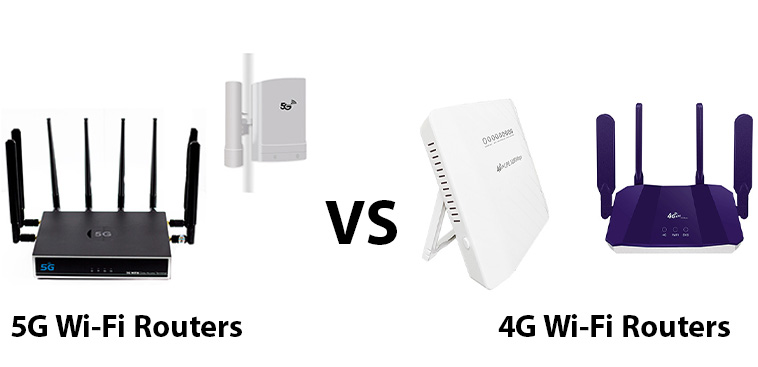Welcome: Shenzhen Limei Technology Co., Ltd
Email: szlimei@tddfdd.com
- TOP
- 13025463935
- Online
- WhatsApp code


• 4G Wi-Fi Router: Relies on LTE (Long-Term Evolution) technology for cellular connectivity, utilizing FDD (Frequency Division Duplexing) or TDD (Time Division Duplexing) spectrum bands.
• 5G Wi-Fi Router: Utilizes 5G NR (New Radio) technology for cellular connectivity, operating in sub-6 GHz or mmWave frequency ranges, providing higher speeds, lower latency, and increased network capacity compared to 4G.
Simultaneous Users
• 4G Wi-Fi Router: Can typically support a moderate number of simultaneous users, from 10 to 32 devices, depending on the specific router model and network conditions.
• 5G Wi-Fi Router: Offers enhanced capacity and can support a larger number of simultaneous users, potentially accommodating hundreds of devices, thanks to the increased network capacity of 5G.
Coverage
• 4G Wi-Fi Router: Provides coverage based on the availability and strength of 4G LTE networks in the area. Coverage can vary depending on the distance from the cellular tower and any obstacles in the surroundings.
• 5G Wi-Fi Router: Initially, 5G coverage may be more limited compared to 4G, with a focus on urban areas and denselypopulated regions. However, 5G networks are being expanded rapidly, and coverage is expected to improve over time.
• 4G Wi-Fi Router: Offers security features such as WPA2-PSK (Wi-Fi Protected Access II with Pre-Shared Key) encryption, firewall capabilities, and MAC address filtering to secure the Wi-Fi network.
• 5G Wi-Fi Router: Provides similar security features as 4G routers, including the latest encryption standards like WPA3, ensuring a high level of security for Wi-Fi connections.
Wi-Fi Standards
• 4G Wi-Fi Router: Supports Wi-Fi standards such as 802.11a/b/g/n/ac. Mainly Wi-Fi 2.4GHz.
• 5G Wi-Fi Router: Supports Wi-Fi standards such as 802.11a/b/g/n/ac/ax, commonly known as Wi-Fi 6. Wi-Fi 6 offers higher data rates, improved efficiency, and better performance in congested environments compared to older Wi-Fi standards. Dual bands (2.4GHz and 5GHz).
Micro-chipset
• 4G Wi-Fi Router: Utilizes chipsets designed for 4G/LTE connectivity. (Qualcomm MDM9207 or MTK7628)
• 5G Wi-Fi Router: Utilizes chipsets specifically designed for 5G connectivity, which incorporate the necessary components for 5G and Wi-Fi connectivity. (Qualcomm Snapdragon X55 or X62) Bandwidth Supported:
• 4G Wi-Fi Router: Supports bandwidth within the range of 20 MHz to 100 MHz, depending on the specific LTE band and carrier aggregation capabilities.
• 5G Wi-Fi Router: Supports significantly wider bandwidths, ranging from 100 MHz to several hundred megahertz, enabling higher data rates and improved network capacity.
• 4G Wi-Fi Router: Provides theoretical maximum data rates up to 150 Mbps and 300 Mbps for downloads and 50 Mbps for uploads, although actual speeds may vary based on network conditions.
• 5G Wi-Fi Router: Offers much higher theoretical maximum data rates, ranging from several hundred Mbps to multiple gigabits per second (Gbps) depending on the specific 5G band, network implementation, and network conditions.
Costs
• 4G Wi-Fi Router: Typically, 4G routers are more affordable compared to 5G routers, both in terms of the device cost and the associated data plans.
• 5G Wi-Fi Router: 5G routers may have a higher upfront cost, and data plans may be relatively.
Contact: Sorho
Phone: +8613025463935
Email: szlimei@tddfdd.com
Add: 1006, 10th Floor, Shajing Yunhua Times Building, Shenzhen, Guangdong, China